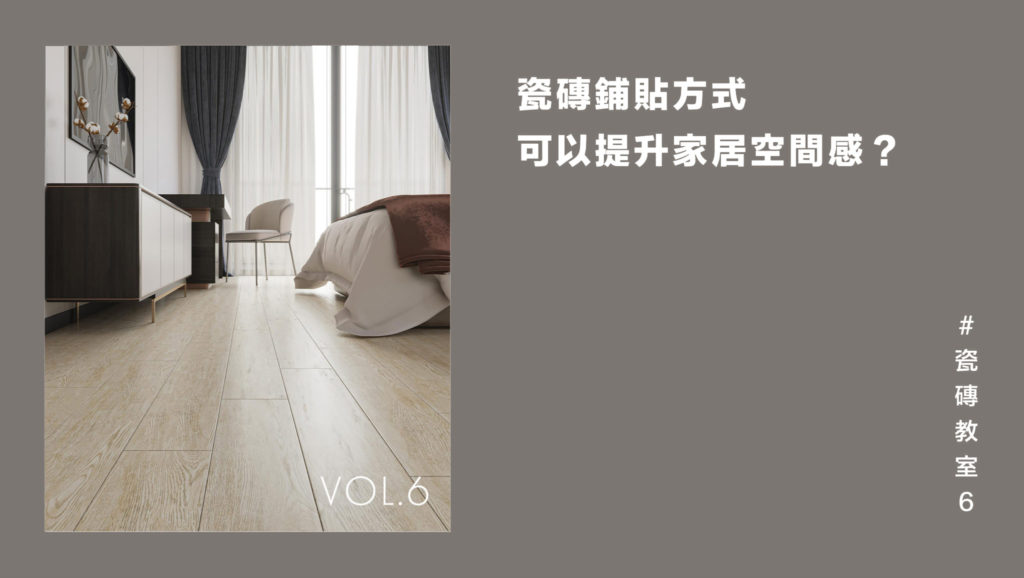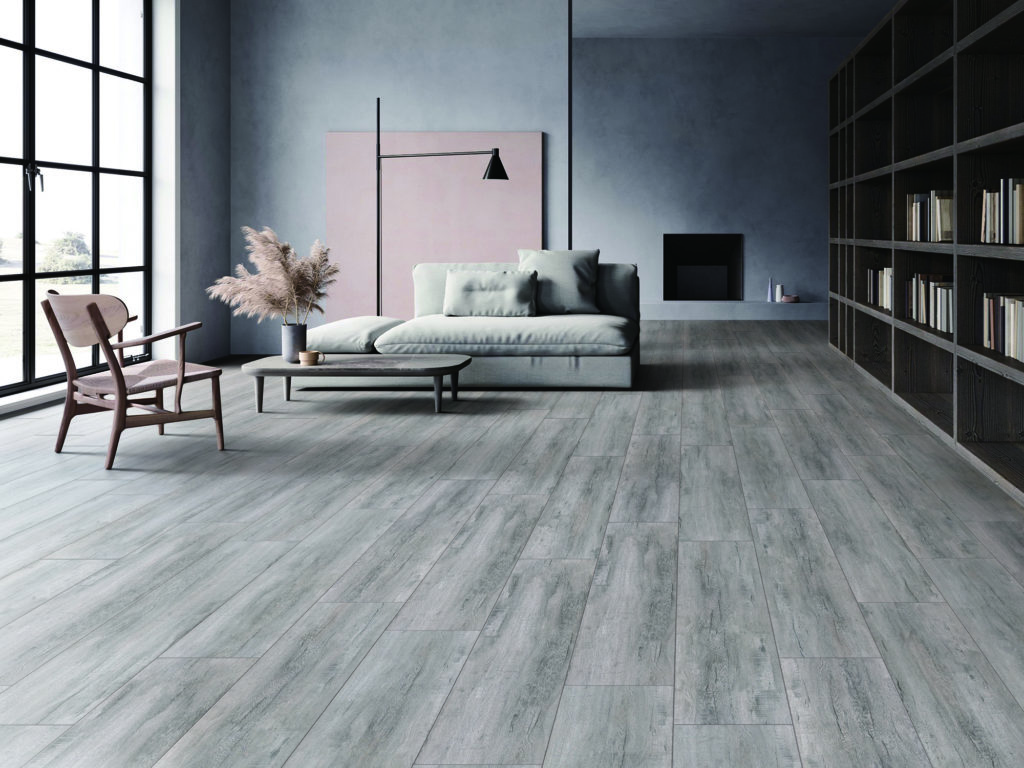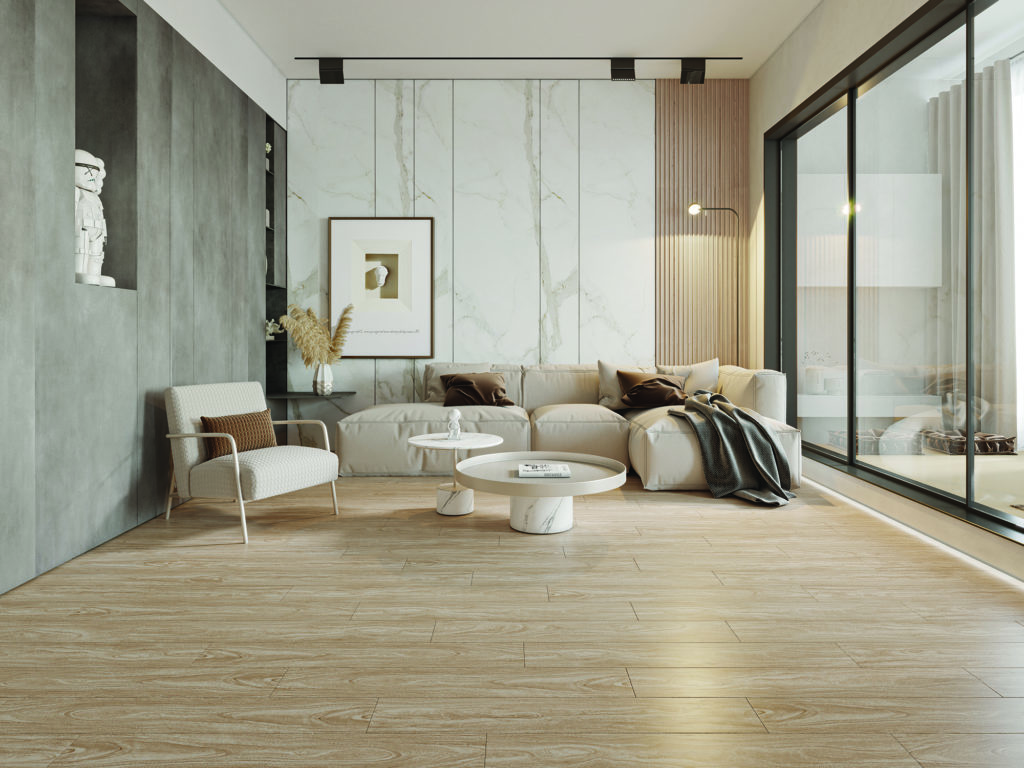We all know how important it is to pick the ideal tiles. But have you ever thought that choosing the right laying pattern can change the overall spatial perception of your house?

If you want to make a room in your house look more spacious, you need to choose the pattern of tiles that could create your desired visual effect. This is where the art of tiles plays the bigger role in terms of house design. It is particularly decisive in Hong Kong since our living space is generally limited and we certainly want to get the most out of our decoration.
Vertical
When using rectangular tiles, laying them vertically can draw our eyes further into the room, creating the illusion of higher walls and ceilings, or just because you desire a daring new look. Room with a low ceiling but a wider floor space is suit this option to open up more space vertically. Use large format tiles instead of many small tiles, as having many grout joints can make the space feel more cramped. It’s also better to lay them without offsetting the grout joints of surrounding tiles for the same purpose.

Horizontal
Horizontal tiles laying will give a wider look. If you have a limited floor space but a tall bathroom, you might like to choose this option. It will visually open up the space, giving you the illusion that the space is wider and longer than it actually is. But the effect may not be as noticeable if you use large format tiles with narrow grout joints. If you want the effect to be more exaggerated try putting horizontal feature lines with mosaics. Other options include contrasting colour tiles.
One more tip, when using lengthy tiles, we suggest applying offset pattern, instead of brick bond pattern, in order to avoid any tile lippage.

Diagonal
Diagonal tile will give a distinct look and enhance the visual space of the room altogether. A diagonal tile layout is not just acceptable but can be preferable in a bathroom or another small room. They make room imperfections less noticeable to the naked eye, thus enhancing the aesthetics of any small room. While it’s true that a diagonal tile layout requires a bit more effort to install, it does make the extra labour feel that much more rewarding.

There are other type of tiles which the cutting process is more complex but has an elegant design.
Herringbone
The herringbone pattern is an arrangement of rectangles and mostly used for floor, walls and road pavement. When laying the herringbone pattern we need certain angle to cut at a 45° so that the corner is right against the edge. Using this as a starting point and using tile spacers to ensure consistent grout joints, the herringbone pattern should fall nicely into place.

Pinwheel
Pinwheel Pattern is a pattern that requires four rectangles to meet, creating a spinning pinwheel motif. One large square tile will be placed diagonally, then four smaller square tiles will be placed near the corners, repeating the pattern throughout. This can cause for an extremely loud floor, therefore is commonly used in showers or on borders of spaces.

Chevron
The chevron pattern is another trendy look that will add movement and focus to the space. While the diagonal, zigzagging lines hearken back to the more traditional herringbone pattern, more lively interpretation offered up by the chevron pattern makes an old space look younger and more modern without sacrificing any of the practical benefits provided by more traditional tile patterns.



